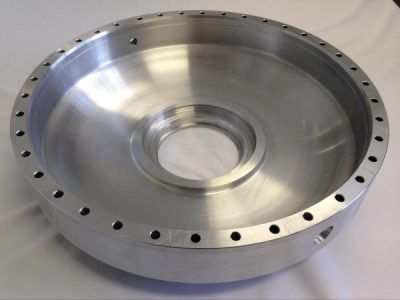Most of us imagine data as something that bounces around invisibly in the atmosphere or a part of the ‘cloud’. In actual fact, most of our data travel around the world via a maze of very real and very physical cables laid on the floor of the ocean. To be precise, there are over 380 of these wires, which in total measure over 1.2 million kilometres and transfer 99% of the world’s international data.
In recent years, most of these underwater data cables have been funded and shared by the major tech companies like Microsoft, Amazon, Google and Facebook. These cables essentially act as a data highway.

The Marea Cable
The Marea Cable, one of the most notable examples of these underwater cables, was created by Microsoft and Facebook, and it just went live last year. This cable alone weighs 4.8 million kilograms which is the same as 34 blue whales. The cable runs from Virginia Beach, USA to Bilbao, Spain and is a bit thicker than a garden hose but can transfer 160 terabits of data per second, which is the equivalent of watching 71 million HD videos at once. What’s more, these cables consist of clusters of wires as thin as glass fibre.
How are these Cables Laid?
Laying underwater internet cables is a 3 step process:
- Step one: It usually takes around a year for these cables to be arranged but can take up to 2 years. The companies laying the cable must first study nautical charts and decipher the best route for their cable. In general, the deeper the cable goes, the better since there’s less chance of it being disturbed.
- Step two: Next, specialised ships are sent out to map out the seabed where the cable will be laid to ensure there isn’t any extreme elevation, volcanic activity or strong underwater currents.
- Step three: Now, the actual cable carrying ships are sent out to sea. It can sometimes take up to a month to load the cable onto one of these enormous vessels. The ships and their crew will spend months on end at sea spooling the cable out onto the seabed.

A Bit of History
Even though the internet wasn’t invented until the 1980s, the first underwater cable for telecommunications was built in 1854. This cable stretched from Newfoundland, Canada and Valentia Island, Ireland. While this line received weak signals and soon fell into disuse, it laid the very first foundations for the kind of communication and technology we are so familiar with today.
Fun Facts:
Sharks are trying to eat the internet. We wish we were joking.
For reasons not yet known, sharks seem to be particularly attracted to the underwater cables and enjoy chewing them, so much so that companies are beginning to put shark-proof protections on their cables.
During the Cold War, the US spied on Russia (then the USSR) by placing a wiretap onto an underwater cable which they used to send messages between naval bases.
In 2013, Egypt’s internet speeds were reduced to 40% capacity after men were caught north of Alexandria in wetsuits after having intentionally dived into the ocean and cut one of the major data lines.
At Prime, we are always motivated by the ever-changing and progressing feats of engineering being achieved. It’s our goal to help our clients transform the world. We offer innovative and tailor-made engineering solutions to even the most complex challenges. If you would like to learn more about how we can help you, get in touch with us today!



